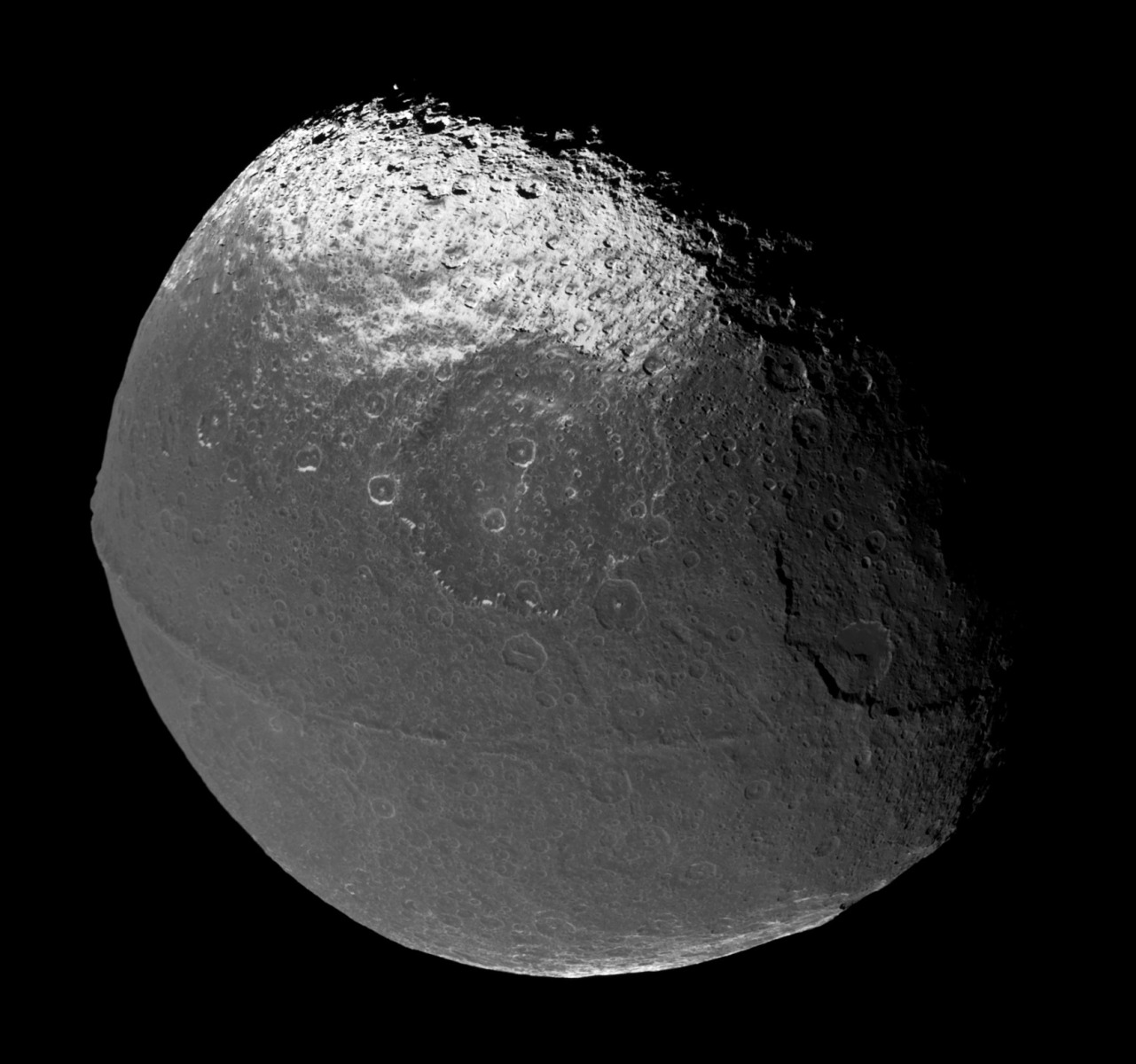Massive landslides on Saturn's moon Iapetus, as studied by the Cassini mission, can help us to understand a rare type of landslide seen down here on Earth and on Mars, according to research published in the journal Nature: Geoscience this month.
Long-runout landslides are a type of avalanche that travel much farther than expected. On Earth, a landslide is expected to travel a horizontal distance that is less than twice the height that the material has fallen. In long-runout landslides, or Sturzstroms, the horizontal distance can be twenty or thirty times the vertical distance. An as yet unidentified physical process is reducing the friction that usually brings landslides to a halt.
 Many hypotheses have been proposed to explain this - it could be lubrication with a layer of trapped atmosphere, powdered rock or water acting to reduce friction - no one hypothesis adequately explains every example. Trapped air, for example, can't explain Sturzstroms observed on the moon or Martian moon of Phobos.
Many hypotheses have been proposed to explain this - it could be lubrication with a layer of trapped atmosphere, powdered rock or water acting to reduce friction - no one hypothesis adequately explains every example. Trapped air, for example, can't explain Sturzstroms observed on the moon or Martian moon of Phobos.
Now, Jeffery M. Moore from the NASA Ames Research Center in California, suggests that Iapetus, the third largest of Saturn's moons, could be "an excellent laboratory for studying long-runout landslides". This is partly because the effect of two of the potential explanations, trapped atmosphere or groundwater, is negligible, allowing us to really home in on a working hypothesis.
Iapetus us a very unusual moon. It consists mainly of ice and has a huge mountain range, 12 miles high, around its bulging equator. Imaging from the Cassini mission suggests it is unique in its frequency and extent of long-runout landslides.
Moore and colleagues identified 30 landslides in Cassini images, the longest of which had travelled an astounding 80km. They were then able to determine the ratio of drop height to runout length (H/L) which gives an idea of the coefficient of friction of the sliding debris and can be compared with avalanches seen elsewhere. Plotting these ratios did not give credence to any of the existing hypotheses.
Although these observations do not yet explain the physics behind Sturzstroms, anything we can learn from Iapetus can be applied to avalanches here on Earth and may help to put constraints on geological affects on Earth and beyond.









Comments
Add a comment